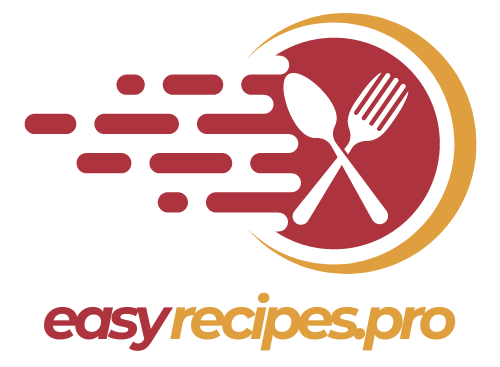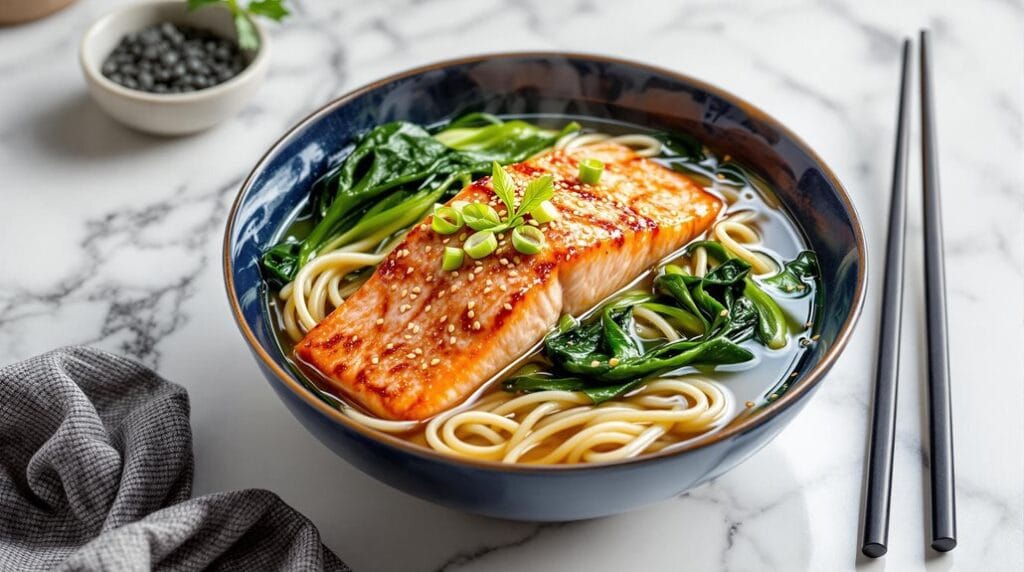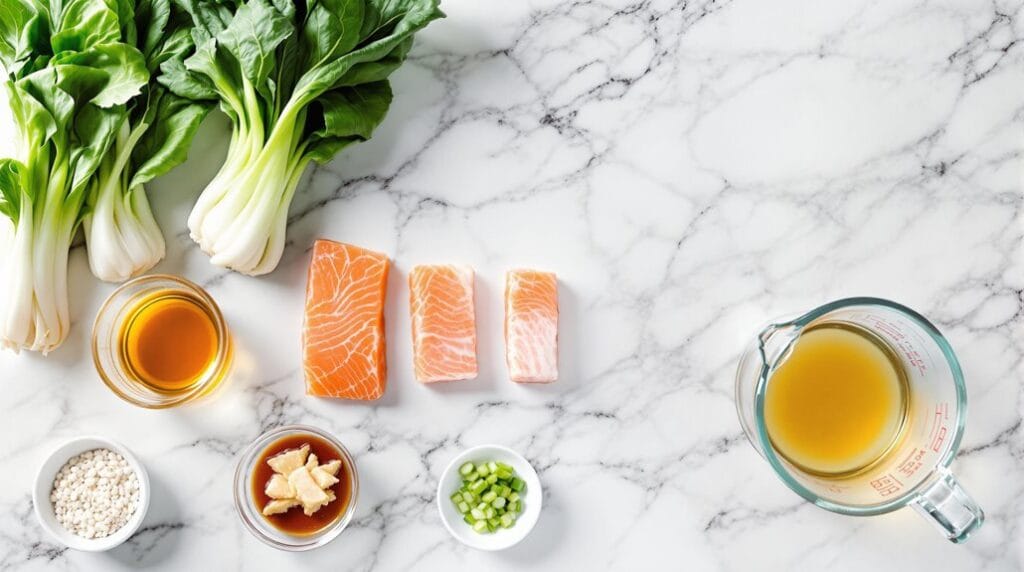Servings 4
- Amount Per Serving
- % Daily Value *
- Total Fat 65.71g102%
- Saturated Fat 14.21g72%
- Cholesterol 223.5mg75%
- Sodium 989.65mg42%
- Potassium 1969.9mg57%
- Total Carbohydrate 72.36g25%
- Dietary Fiber 3.59g15%
- Sugars 9.89g
- Protein 97.39g195%
- Vitamin A 250.76 IU
- Vitamin C 22.42 mg
- Calcium 121.71 mg
- Iron 3.79 mg
- Vitamin D 43.56 IU
- Vitamin E 14.39 IU
- Vitamin K 20.98 mcg
- Thiamin 1 mg
- Riboflavin 0.86 mg
- Niacin 39.19 mg
- Vitamin B6 2.85 mg
- Folate 142.39 mcg
- Vitamin B12 12.79 mcg
- Phosphorus 1198.13 mg
- Magnesium 185.73 mg
- Zinc 3.28 mg
* Percent Daily Values are based on a 2,000 calorie diet. Your daily value may be higher or lower depending on your calorie needs.
Note
Extra Tips: For best results, ensure salmon fillets are similar in size for even cooking.
The noodles will continue to absorb liquid after cooking, so serve immediately for best texture.
If you prefer spicier food, increase the amount of Sriracha or add chilli flakes.
The pak choi can be substituted with other Asian greens like bok choy or Chinese broccoli.
Food brings people together, and that's especially true when you're sharing fusion dishes that blend different culinary traditions.
This Asian-style salmon recipe can spark discussions about various cooking techniques, ingredient substitutions, and personal modifications. You'll find that everyone has their own twist on classic dishes, and that's what makes recipe sharing so enriching.
Whether you're posting your results on social media, exchanging recipes with neighbours, or teaching family members how to prepare this dish, you're participating in a time-honoured tradition of passing down culinary knowledge.
It's amazing how a simple recipe can bridge cultural gaps and create lasting connections between people who might otherwise never have connected.
Conclusion
You've discovered a recipe that brings together the best of both worlds - the rich heritage of Pacific salmon and modern cooking convenience. Whether you're sharing this Asian-style salmon with family or enjoying it solo, you'll appreciate how the Ninja Speedi transforms simple ingredients into a restaurant-worthy meal. It's more than just dinner; it's a celebration of cultural fusion that you can easily recreate in your own kitchen.
Did you make this recipe?
Follow @easyrecipes.pro on Instagram for more recipes.
Pin this recipe to share with your friends and followers.



